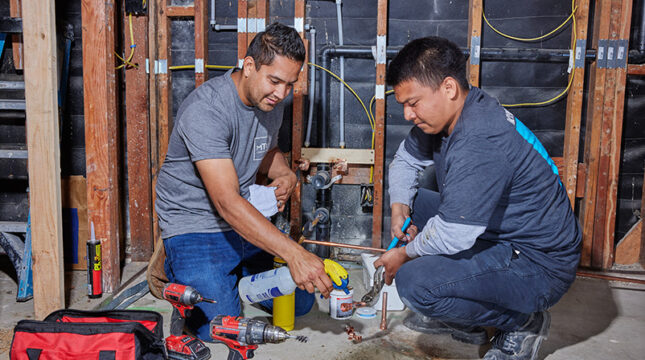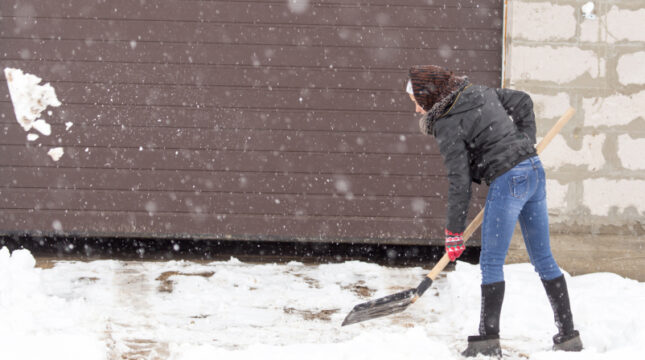What is a peril in insurance?
A peril is the actual event or occurrence that causes damage or loss. It’s what happens and leads to a claim on your insurance. Common perils include:
- Fire: A blaze from the business next door that damages your property or inventory.
- Theft: Someone stealing equipment or merchandise from your business.
- Vandalism: Someone destroying or damaging your property.
- Windstorm, sleet and hail: Damage caused by heavy wind or hailstorm.
- Power surges: An electrical event that damages electronic equipment and electrical systems.
- Equipment breakdown: When an essential piece of machinery stops working, impacting your operations.
A covered peril is a type of peril your insurance policy protects against. For example, if your policy covers fire and hail property damage, those are considered covered perils, and your insurance can help cover the costs associated with those events.
Some perils are difficult to insure due to their unpredictable nature or because covering them would be against public policy. Some common exclusions are:
- Floods: Many carriers (including NEXT) usually exclude flood from commercial property policies because of their potentially catastrophic nature and the widespread damage. It often requires a separate policy from FEMA.
- Earthquakes and other natural disasters: The extensive damage usually requires additional coverage.
- Wildfires. Similar to earthquakes, they usually require extra coverage.
- Acts of war, terrorism or civil commotion: Generally excluded from general liability and commercial property coverage due to their extreme levels of destruction.
- Intentional acts by the policyholder: Insurance policies do not cover losses that result from intentional acts or criminal behavior by the policyholder.
Named perils vs. open perils
Understanding whether your insurance covers named or open perils helps you know what risks are protected and can guide you in choosing the right insurance for your needs.
- Named perils: A named perils insurance policy only covers the specific perils listed in the policy. If a peril isn’t specified or “named,” it’s not covered. For example, named perils coverage might list fire, theft and vandalism as covered perils. If your business suffers damage from a peril not listed, like an earthquake, you won’t be covered.
- Open perils: Also known as “all-risk” or “comprehensive” coverage, open peril policies cover all perils unless they are expressly excluded. If it’s not listed as an exclusion, it’s covered. For example, an open perils policy might cover all risks except tornadoes.
What is a hazard in insurance?
A hazard is anything that increases the likelihood of a problem happening. Think of it as a risk factor that makes a bad situation more likely. Here are a few types of hazards:
- Physical hazard: Unsafe working conditions, like cluttered walkways or faulty equipment, that might lead to accidents or injuries.
- Moral hazard: A situation where someone might take risks they wouldn’t usually take because they know they’re covered by insurance. For instance, retail store employees might be less careful locking up merchandise if they think their actions won’t have consequences.
- Legal hazard: Changes in laws or regulations that could affect your business. For example, new safety regulations might require expensive upgrades to your equipment.
To confuse matters, a hazard is not the same as hazard insurance. In the insurance world, hazard insurance refers to property insurance such as commercial property insurance or dwelling coverage for homeowners.
Example of the difference between peril and hazard
Hazards and perils play different roles in the world of insurance. While they’re both crucial in risk management and can lead to financial loss, insurance providers need to address their differences.
Imagine you have a small retail store with narrow aisles and poorly lit corners. These conditions create a physical hazard because they increase the risk of customers tripping or bumping into things, potentially leading to accidents.
The narrow aisles and poor lighting are not perils — the actual things that cause damage or loss. Instead, they are conditions that make accidents more likely.
The actual peril would be the accident that happens due to these hazards, such as a customer tripping and falling. In this case, the peril is the fall or injury, while the physical hazard is the unsafe store layout and lighting that increases the likelihood of the accident.
Insurance companies look at hazards to understand the risk factors associated with your business. This helps them set appropriate premiums and suggest safety measures to reduce risk. For example, if they identify poor lighting in your store as a hazard, they might recommend electrical upgrades to lower your risk profile.
In contrast, insurance policies specifically cover certain perils. Knowing which perils are covered helps you understand what damage or loss your policy will protect against.
Understanding these differences helps you manage risks better and choose the right insurance for your business.
Why insurance companies differentiate hazard vs. peril
The insurance industry distinguishes between hazard and peril to manage and price risk effectively. Here’s why:
- Risk assessment. Identifying hazards helps insurers assess risks and recommend improvements to reduce the likelihood of a peril occurring. This proactive approach helps set affordable premiums and lower the chance of insurance claims.
- Coverage clarity: Differentiating perils ensures policies clearly define what is covered. Knowing which perils are included helps you understand your protection and avoid surprises when a claim arises.
- Tailored policies: Both terms allow insurers to create more precise policies. This means your coverage can be tailored to address your business’s specific risks, providing better protection against the events that matter most to you.
5 ways to mitigate hazards in your business
Mitigating hazards is vital to reducing risks and ensuring a safer workplace. Here are some practical steps you can take:
- Conduct regular inspections. Regularly inspect your business premises for potential hazards. Look for issues like uneven flooring, poor lighting or malfunctioning equipment that could pose risks.
- Implement safety protocols. Develop and enforce safety protocols and procedures. This includes training employees on proper equipment handling, emergency procedures and enforcing safe work practices.
- Maintain equipment. Keep all equipment and machinery well-maintained. Schedule regular maintenance and promptly repair any issues to prevent accidents.
- Improve workplace conditions. Physical improvements such as better lighting, clear walkways and ergonomic workstations can help reduce the risk of accidents.
Review and update policies. Regularly review and update your safety policies to address new hazards or regulation changes. Ensure your employees are aware of any updates.









